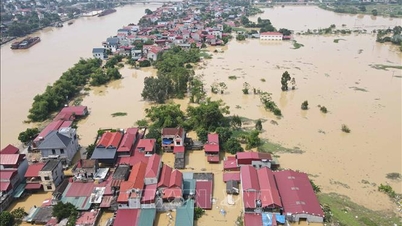(GLO)-According to a new bulletin posted by the US National Oceanic and Atmospheric Administration (NOAA), current natural conditions are expected to gradually strengthen El Nino.
 |
A bushfire in New South Wales, Australia. Photo: AP |
Occurring on average every 2–7 years, El Niño is a climate phenomenon marked by warmer-than-average sea surface temperatures in the central and eastern Pacific Ocean near the equator.
At the end of March 2023, the United Nations (UN) Intergovernmental Panel on Climate Change (IPCC) published a 20-page report, distilling nearly 10 years of scientific documents to warn of the existing risks of global warming, as well as propose solutions to deal with it.
To make matters worse, the world’s coldest place, Siberia, also “sweated” with a record high temperature of 37.7 degrees Celsius last week. Extreme heat also spread across Central Asia. In early April, Turkmenistan reached 42 degrees Celsius, a world record for that latitude. Since then, the heat has continued to rise. On June 7, temperatures in China exceeded 45 degrees Celsius, in Uzbekistan 43 degrees Celsius and Kazakhstan 41 degrees Celsius.
Climatologist Maximiliano Herrera commented that it was a heat wave that was rewriting the world's climate history.
In the past 3 years, the world has been affected by the La Nina phenomenon (heavy rain). Therefore, many experts are concerned that this year's El Nino phenomenon will be unpredictable. El Nino has a great impact on socio-economic activities, especially agricultural production, leading to negative impacts on global food prices.
The reality of the past few decades shows that the global industrialization process has increased the amount of greenhouse gas emissions into the atmosphere. As a result, the climate has changed, the Earth's surface temperature has increased, sea levels have risen, and extreme weather events such as floods and droughts have become increasingly severe.
Source link


![[Photo] Closing ceremony of the 18th Congress of Hanoi Party Committee](https://vphoto.vietnam.vn/thumb/1200x675/vietnam/resource/IMAGE/2025/10/17/1760704850107_ndo_br_1-jpg.webp)



































![[Photo] Nhan Dan Newspaper launches “Fatherland in the Heart: The Concert Film”](https://vphoto.vietnam.vn/thumb/1200x675/vietnam/resource/IMAGE/2025/10/16/1760622132545_thiet-ke-chua-co-ten-36-png.webp)










































































Comment (0)